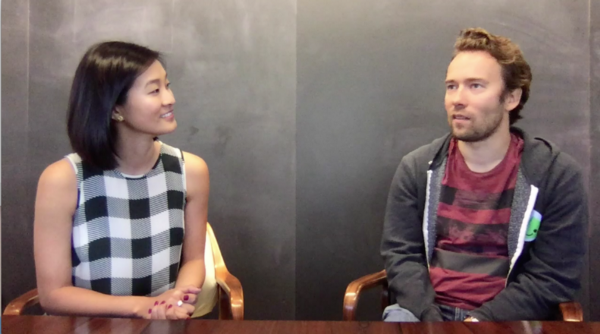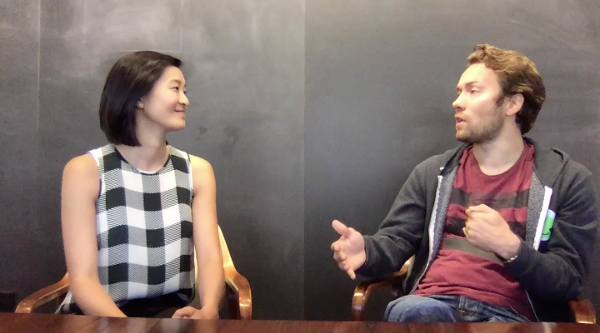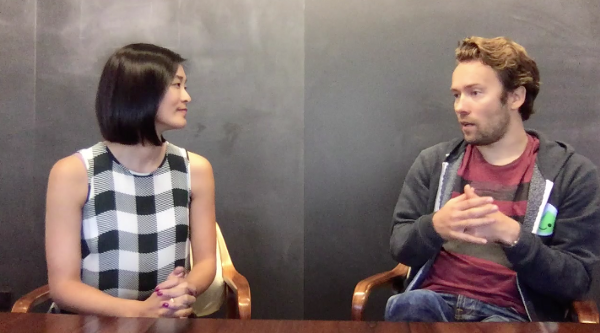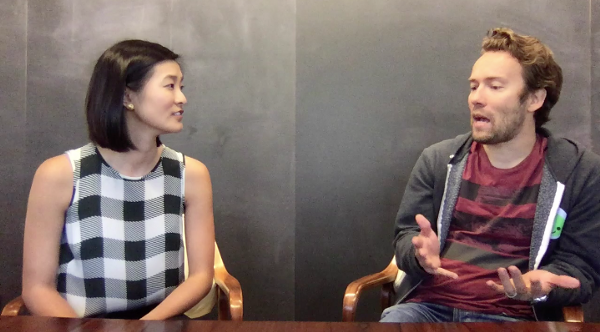As the Creator of Ruby on Rails and Founder & CTO of Basecamp, David Heinemeier Hansson shares with me what he wishes he learned earlier as a leader.
We chat about empathy, illusions of disagreement, and why
Claire: Hi, everyone. I’m Claire Lew, and I’m the CEO of Know Your Company. Today, I’ve got a super special guest with me. I’ve got David Heinemeier Hansson who is the co-founder of Basecamp, along with the founder of Ruby on Rails, which I feel like half the internet is built on, including Know Your Company. I’m lucky because David actually sits on our board, so we’ve gotten to work pretty closely over the past few years. I know I’ve personally benefited as a CEO from a lot of your insights. I’m excited to have you here and ask you this one question about leadership.
DHH: Awesome. I can’t wait to be surprised.
Claire: Yes haha. Hopefully, it’s a question that you’re ready for. My question for you, David, is:
What’s something you wish you would have learned earlier as a leader?
DHH: Yes, wow, that’s a good question. There’s definitely tons of things. I think one, I got exposed to, early on, from leadership training was the negative end of it. I got to see a lot of really poor leadership. I got to see a lot of poor management, and I learned a lot from that, but there weren’t so many positive examples from that to draw from. I mean it’s great to learn what not to do, but it’s also sometimes good to have some idea of what works.
Claire: Yes.

DHH: I think one of the early principles I took from that was just like, oh, I experienced all these bad leadership moments where I’m like, “At least I’m not going to do that.” Let me just try to be more authentic in the way that I’m acting as a leader, which means how would I like to be treated, right?
Claire: Mm-hmm
DHH: That was where a lot of it got driven forward. I just got it going in that group and thinking like, “Well, at least if I’m acting in ways where if I was on the other side of the table, I would feel good about it.” That’s good, right? I think that goes a long way. That goes, I don’t know, half the way maybe, right?
Claire: Yes.
DHH: Then, the other half of the way is then realizing not everyone is like you. Not everyone would react the same way as you would in a certain situation. So you can feel like what we put in forward or what we’re talking about, “I’m being fair. I’m being on top of it, of whatever because I’m putting myself on the other side.”
But I’m putting myself on the other side. I’m not putting the person necessarily that I’m talking to on the other side.
I think that, that was probably one of the things that I had to just learn. To see that there are different reactions, that I could propose things or talk to people in a certain way or try to inspire people in a certain way that I knew I would have reacted well to just through the experiences that I’ve had. Then, it didn’t work for whatever reason because the person on the other end of this was not me. It was someone else. They had different sensibilities. They had different things that they responded well to. I think sometimes, early on at least, that led to some frustration like, “Why can’t you just get it?”
Claire: Like, “This should work.”
DHH: Exactly. This should have worked. I don’t feel like I’m being unreasonable. I don’t feel like it, because again, I’m putting myself on the other side. I’m trying to be empathetic to my own mirror image, which is not actually a very good definition of empathy. You should get into the other person’s shoes, right. I’m trying to get into my own role somewhere else, which, I think, is one good influence, but it’s certainly not the only one.
Claire: Right.
DHH: Having just to picking up more on who’s on the other side and picking up on that, it’s not just like someone is not me. It’s that, that person is different from another person. It’s different from another person. The way you talk to people, the way you try to motivate them, the way you try to inspire them, they’re going to be different. Even within the large group of people that are not me.There’s all these other individuals.
It sounds to obvious, but I think it’s harder to summarize in just an essay here or single thing or just like, “Oh, you should do things this way.” For then some number of people who respond well to that avenue, that’s going to be totally the right thing, and there’s just the people who don’t. In some cases, it’s like the exact opposite that works for one group of people that doesn’t work for another group of people.
Claire: Totally. I think it’s so interesting because to your point of it sounding obvious, treat people the way you would like to be treated, right? Oh, duh, so obvious, and yet, it’s absolutely not because your point is it takes some nuance and awareness to realize that, “Okay, every person isn’t like me. They don’t have the same experiences, tendencies, personality.” I think, I mean personally, when I’m thinking about running Know Your Company, it can be hard to feel that way because you’re in your own bubble of things.
I mean for you, personally, was there a moment that happened in the past, 10, 15 years since you’re running Basecamp where it stared you in the face? You’re like, “Oh, wow. I think I’m putting myself on the other side and not actually thinking about them and not me.”
DHH: Yes, I’m trying to think of a specific scenario.
Claire: Yes, go ahead.

DHH: I’m trying to think of specific characteristics. I have a high sense of urgency. One of the things that help in this is to get a vocabulary to talk about personality differences and traits and leanings. We did, at Basecamp a while back… I don’t know what it was called. They never called personality test or whatever, right? That’s another thing. It’s an assessment…
Claire: Is it a StrengthsFinder thing?
DHH: Yes! StrengthsFinder is one of them, and we’ve done another. We used to have an assessment we did with new hires that was even more in-depth than strengths finder, but let’s just say StrengthsFinder, for example, right?
Claire: Okay, cool. Yes, the StrengthsFinder.
DHH: Yes, so StrengthsFinder, that I have a high level of urgency. I then have a lower score on thoroughness, and those things are frequently in conflict. There are other people in the company that have relatively low levels of urgency and very high levels of thoroughness. They really want to make sure that all the Is are dotted and T’s striped or whatever that’s called or something. Sometimes, there’s a tension there, right? I do get a problem or I do get a project and go like, “We could ship this in two weeks.” They go like, “Uhhh, what are you talking about?”
Claire: No, no, no.
DHH: No.
Claire: No way.
DHH: It’s not because we’re looking at things differently in the sense of how much hourly input in there needs to be. When I think of, “We can ship this in two weeks,” I’m not thinking, “Oh, we could ship this in two weeks if we work 120 hours and weekends and whatever.” I’m thinking, “We could ship this in two weeks because I will cut this corner, that corner and this corner.” I’ll end up with a smaller problem that I need to solve in two weeks that I can solve that in 40 hours a week. Versus there are other people in the company who have a much higher level of thoroughness that will think through all these other, “Well, what about this edge case? What about that edge case? What about this edge case,” right?
Claire: Yes.
DHH: Those edge cases are totally valid. It’s just in many cases, I’m just willing to trade off. That’s like, “Ah, let’s just launch and see what happens,” because when we launch, it might not be worth it at all. Then, you could have solved all those edge cases for something that just isn’t done. It doesn’t go anywhere, right?
I think even between Jason (my co-founder at Basecamp) and I, we often have some of this tension because we have different sensibilities around these. Jason happens to have also have a very high level of urgency, so there, we have some common denominator thing.
Claire: Okay, alignment, yes.
DHH: We have other sensibilities around experiments and how far or how much to invest upfront in experiment. I have a very relatively low tolerance. I want to put in the least amount I can to just get a trial going, and Jason’s offering more like, “No, that won’t be a proper trial. You have to round it up more. You have to spend more time on it. Otherwise, you won’t get a viable result.”
There’s just all these inherent traits of thoroughness or urgency that are intentions. You can often come into these illusions of disagreement or of tension or whatever because people are coming from different angles.
When I say like, “Oh, we could ship this in two weeks,” and someone goes , “What the fuck are you talking about? No, no, we couldn’t do that.” We’re just not talking about the same thing. You’re talking about a version of the project that is embellished in all sorts of ways, to deal with all these edge cases. It’s completely reasonable to talk about that. I’m talking about the version that I have in my head that has half of it cut off and two-thirds of it just stopped out to get something out there.
That’s just one example of something where you can get into conflict or tension or miss each other because you’re coming at it from different angles. The way that I’m posting things, I’m trying to talk to myself, because that’s the first bar to clear anything. Most people don’t even clear that bar, right? They’re not treating others like they would be wanted to be treated themselves. But if you clear that bar, then, the next level is well, you have to treat others like they would want to be treated.
Not just like how you would want to be treated, which requires all that additional level of empathy and insight into, “Who are they? What are their strengths? What are their sensibilities? What do they respond to?” Once you unlock that, it’s just, everything becomes a lot easier.
I mean it’s not even once you’ve unlocked that because you’ll never truly unlock that. But at least if you’re trying, you’re making an effort to understand who the recipient is.
Claire: Yes, absolutely.
DHH: It’s funny because I frequently have just internal tension with that like in my writing. You would think some writers think like, “Oh, think about the reader and what would they like”… I never do that. The only way I can write in a productive manner is to think about myself on the other side.
Claire: Write for yourself.
DHH: What would I want to read? Again, that just tops out at some level. I’m sure that’s restrictive in some levels, and there are ways. Perhaps some of the messages that we have could reach broader if we were better and more capable of writing for other people, not just for ourselves. I accept that limitation in my writing. I try not to accept that limitation in leadership and management.
Claire: Sure. Well, and that was literally like the next question I wanted to ask when you brought this topic up. Because I completely agree that I think as a leader, there is almost, sometimes, this fine line between wanting to push the company forward and lead your team and inspire folks in a way where it’s catering very much to the individual taste and preferences of every employee. Is there a line too where you shouldn’t do that or can’t do that, or in a case of you can’t make everyone in the company happy, right, or where you can’t fulfill every person and present something in a way where every person who — whether they’re more thorough or they have a great sense of urgency — are going to feel good. How do you find, straddle that line?

DHH: Yes, I think it’s one of the things like the math between two points is relatively simple. Then, you add a third or fourth point, and it’s completely ugly and un-understandable. I’ve not even solved a point-to-point part of the puzzle yet, so I don’t try to necessarily solve the 34-point part of the puzzle.
I mostly use this technique when I’m dealing with people in one-on-ones or in direct approach to developing people. When it comes to broader initiatives on the company level on what we’re doing or whatever, it’s there, but not as prominent. Because then, Jason and I have a tendency. We fall back to like, “All right. There’s two people that’s there.” There’s Jason. There’s me, and we have different sensibilities. We know that there’s some overlap. If between the two of us, we can just have a general understanding and have somewhat of an idea or like how this other one’s to be perceived, that’s the best that we’re at. Which is why this is constantly like a curve.
I think that this is also one of those things where it helps to have a somewhat stable company. A lot of the people at Basecamp, we’ve been working with for many, many years. We have several people who have worked here for more than a decade. We have tons of people work here for five years and more. You get to you have a better shot at understanding people’s preferences and strengths and reactions, anticipate their reactions once you’ve worked for them for a longer period of time. I think that’s one of the ways that having a stable workforce really works into your favor.
It’s one of those things though, on the other hand, that can throw you off when you then have someone new joining the company. You don’t fully understand what they respond well to. It’s pretty easy to misstep. That’s, to some extent, just what it is, like the way you learn about another person is that you misstep and you gauged reactions. You see how well the approach you thought was working doesn’t. Then, you calibrate, and then, you try again. At least just being aware of that, it’s a big step forward.
Claire: Absolutely. As you try to keep this in mind and like you were saying, you clear this first bar of, “Okay, I think I’m treating people how I would like to be treated.”
DHH: Yes.
Claire: Then, you go perch at that second bar, and okay, well, how would they like to be treated? How do you, in your head or in one-on-one interactions or as you and Jason think about how you also present information to the company? Right now, you’ve got the all-company meet-up going on right now. How do you try to bake that into how you operate as a leader, David?
DHH: I find it hard to do two explicitly at a conscious level that this calibration become part of the gut reaction system. I think though we’ve gone better at that in the sense of let’s say there’s some announcement we want to make to the company, that first of all, we read it for ourselves and clear that first bar, what I would like to be spoken to in this manner? We’re like, “Okay, cool.” Hey, let’s think about all the ways this could be interpreted in different ways. People sometimes call this the devil’s advocate or whatever. I just try to misinterpret anything that if we try to put it out there and schemes we put in place.
For example, one of the more, the bigger changes we made on the personnel’s side of things where a couple of years ago, we went to a new salary, pay system. We used to have what most people or what a lot of companies do, which is very individualized. Everyone negotiate, somewhat, their own salary. No two people at the company had the same salary. We just found, for us, that, that was not working well.
I felt like I wasn’t treating the company the way I would want to be treated because I felt just a deep sense of unfairness about that. People joined at different times. They ended up with different salaries, even though those different salaries doesn’t always match their differences in the scale of experiences. I just felt like, “Hey,” I thought through it as in like, “If the payroll was public, would I be embarrassed about that?” In the few instances, we ended up feeling, “Yes, we would.” Then, we went through this whole process of thinking like, “Okay. What are we going to do about that?”
First thing was what is the market actually? We often say like, “Oh, yes. I think we’re paying like in market,” but we didn’t know. We just had this anecdotal information about someone said, “This person over at this company is being paid so much.” That’s just not a very rigorous way of dealing with something so important as pay.
We went and like, “Well, let’s hire a company.” We ended up using Radford, which is a service that surveys a bunch of different technology companies and just take you through the whole process of what did we want to pay people? We hadn’t even thought that up. It just happened. We made it a lot more rigorous about it, which ended that at some point, we had to communicate that like, “Hey, we switching from a system business, ad hoc system that’s not very rigorous and may well be and was unfair in some instances. We’re switching to this new system where everyone is going to be paid the same if they have the same level of experience and skills and work in the same position.” That’s a pretty big change.
Claire: It’s sensitive.
DHH: It’s very sensitive, right?
Claire: It’s sensitive. It’s about money.
DHH: Thankfully, in our instance, we’ve had a way of doing it where we didn’t have to decrease anyone’s pay. The only factual change was for that a bunch of people got a big raise.
Claire: Nice.

DHH: That’s what you say, right, like, “Nice. That sounds nice,” but there’s all sorts of things that are actually not so nice about it.
Claire: Oh, okay, yes.
DHH: One of the case studies we looked at was there’s this guy in, I think, Seattle or something running a payment processing company who said like, “We’re going to pay everyone $70,000. That’s going to be the floor.” You ever read something about like, “Oh, at $70,000, money stopped being a factor and happiness doesn’t increase.”
Claire: That’s the threshold, yes.
DHH: That’s the threshold, so you want to pay everyone $70,000. He got an incredible amount of awesome feedback and some negative feedback from the outside, right? You’d think within that company, isn’t that only good?
Claire: Okay. That’s what I would think, yes.
DHH: Exactly. It turned it wasn’t, necessarily. What the floor meant was there was a bunch of people who are, I don’t know, making $30,000, $40,000 who got a big raise. Then, there were people making $105,000 who got no raise. They got to see all these people who, they felt for whatever reason, that before, there was a split. Maybe they felt that they were being paid $105,000 because had a law degree or they had long experiences or something else, that there was a relative fix between precisions that felt reasonable. All of a sudden, that relative fix got erased, right? A bunch of people, apparently, ended up leaving because they were not happy with that at all. You go like, “Holy shit. That’s fascinating.”
You’re doing a supposedly just universally good thing by raising the floor, but it has all these secondary effects. That story definitely left the mark. Not in the particulars, just in the fact that clearly, the guy who was CEO and wanted to raise everyone’s salary did not anticipate that.
Claire: Yes, and he had the best of intentions, right, and wanting to cure that.
DHH: Yes, and I think that’s really where this is important because I think most business leaders would think in most cases, that they have the best intentions. You know what? Best intentions are just not good enough. Best intentions — everyone says they have the best intentions.
Best intention is bullshit. What matters is outcomes, right, and whether you’re taking actually steps to anticipate those outcomes and mitigate those outcomes the best you can and just think through that whole thing.
When we went through this payment shift or pay adjustment process, that was one of the big things like, “All right. We’re going to move.” There were some people who got some very large raises, and I felt like, “That’s great.” We wanted to set a target that we wanted to pay everyone at the top 5% or the 95 percentile of the industry, based on Chicago or better rates. In some cases, we were just off on that, right? We were catching up, but still. These were some of the things we thought through. Then, we thought through all the ways. We wrote up the announcement.
Then, we tried to just poke holes on it from like, “Oh, if I’m a person like this who’s sitting in this position where I, for example, do not get a raise, am I going to read this and go like, ‘What a jip. Everyone else fucking got a sack of money, and I didn’t get anything?’” That’s one of the strategies we tried to use to get broader perspectives. Again, these are like we’re role-playing, so it’s a pretty inaccurate science, right?
Claire: Of course. It’s not science.

DHH: Exactly, it’s not science. There’s a bunch of things, through the reactions to all sorts of things where we went after what’s like, “Oh, holy shit. I totally couldn’t of thought that.” I don’t have a vivid enough imagination to imagine other people sufficiently different from me, and their reaction is different from me. Then, in almost all cases, you can still back-trace and then go like, “All right. I actually understand where that’s coming from.”
Claire: Right. I think that was such an incredible insight. I mean personally, I find that such an important reminder that yes, your best intentions are not good enough as an employer, as a leader. It’s not. It’s what you do, right?
DHH: It is what goes into that consideration. Most people’s best intentions just go from there, like little heads, but maybe they cleared the bar on how they wanted to be treated themselves. I think oftentimes, they don’t think clear of some romanticized version of what they would have done themselves in that situation, which is just a pretty poor gauge of whether this is good and not good. Your gauge is, “What is the reaction?”
Claire: Exactly, yes. Your gauge is, “What is the reaction?” I’ll be definitely keeping that in mind, David.
DHH: Cool.
Claire: Thanks so much for your time.
DHH: Yes, thanks for having me.
Claire: I know everyone who’s watching this, yes, appreciates it.
DHH: This was fun.
Claire: Cool. Thanks so much.
DHH: Thanks!
